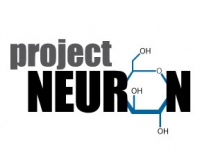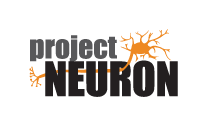Food for thought: What fuels us? Glucose, the endocrine system, and health

By investigating the question “What fuels us?”, students integrate bodily and metabolic phenomena on a cellular and systemic level. Focusing on glucose, the endocrine system, and health, this unit provides students with a variety of activities and lessons that require an active role by the students. Students calculate and draw a disproportionate “glunculus,” develop models and provide medical diagnoses and treatments to scenarios, construct adrenaline models using scientific sources, plan and perform experiments in a computer program that uses rats as a model organism, and finally, evaluate articles to develop a PSA on the risks and preventative nature of Type II Diabetes.
This unit connects to research led by Dr. Paul Gold at the University of Illinois (now at Syracuse University).
-
Lesson 1: Why is glucose important for the body and brain?
The purpose of this lesson is to introduce the driving question of the unit, “What fuels us?” Through a series of activities, students actively participate in examining how the body uses its main energy source, glucose. First, students calculate and draw models exhibiting the disproportionate distribution of glucose throughout the body, and discuss why certain organs may require more energy than others. Second, students analyze and interpret data to explain the role of glycogen and glucose in maintaining blood glucose homeostasis.
Updated in 2014 -
Lesson 2: How are glucose levels regulated in the body?
The purpose of this lesson is to introduce the endocrine system and its role in maintaining blood glucose homeostasis in the body. Students model the endocrine system by participating in a system that makes cheese and crackers. Students then watch a video explaining the fundamental aspects of the endocrine system. Afterwards, students discuss what parts of their cracker and cheese production system represented specific aspects of the endocrine system. To further relate the lesson to glucose homeostasis, students develop a model for the action of glucagon and insulin in the body by organizing cards that represent different organs, hormones, receptors, and intracellular molecules.
Updated in 2014Associated Media: -
Lesson 3: How does adrenalin affect the body and the brain?
Lesson 3 aims to explore the fight-or-flight response and how it relates to glucose availability in the body and the brain. Students reflect on personal adrenalin experiences to recognize how their heart rate, breathing, and memory change in this sympathetic state. Using their personal experiences and the information learned from Lessons 1 & 2, students construct a model to predict how the stress hormone adrenalin affects the body. Next, students proceed through a series of three checkpoints to test their model and make revisions as needed. Finally, students use their models to explain, communicate, predict, and test the effect an adrenal rush has on the endocrine system and the body as a whole.
Updated in 2014 -
Lesson 4: How does glucose affect memory in aging populations?
In this lesson, students learn about the role of adrenalin and glucose in age-related rapid forgetting. Using the models from previous lessons, students design and conduct their own experiments to discover possible reasons for age-related memory loss in elderly people. Students perform experiments using “Rat Recall”, a program simulating behavior of young and old rats in a task designed to test memory retention. Rat Recall allows students to test the effects of glucose and epinephrine on memory. This simulation builds on behavioral data collected in experiments conducted by neuroscientist Dr. Paul Gold at Syracuse University. After performing their group experiments, students work as a class to determine the roles that adrenalin and glucose may have in age-related memory loss.
Updated in 2015Associated Media: -
Lesson 5: How does glucose dysregulation lead to disease?
In this lesson, students learn about the consequences of the dysregulation of blood glucose levels in type 2 diabetes. Students apply their knowledge of the insulin/glucagon model from Lesson 2 by integrating information from multiple readings that discuss risk factors for type 2 diabetes. Students learn that type 2 diabetes is preventable and is brought on by a sedentary lifestyle, poor diet, and stress. Using the information they collect, students collaborate to develop a PSA that promotes the prevention of type 2 diabetes and includes information on the dangers of stress on glucose regulation and health.
Updated in 2014

